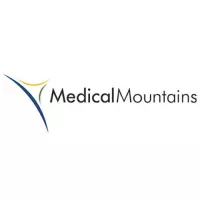
Tuttlingen – As of today, the EU-MDR is mandatory. According to its self-image, it aims to “create a robust, transparent, predictable and sustainable legal framework for medical devices that ensures a high level of safety and health and at the same time supports innovation.” From the point of view of MedicalMountains GmbH, however, a few essential points are still unclear – which ultimately have a major impact on the security of care for patients.
"We have been working on the European MDR system for many years, but the building is simply not ready yet," says MedicalMountains Managing Director Julia Steckeler. "Figuratively speaking, the companies should finally move in, even though the foundations are not 100% viable, essential lines are missing and hardly anyone fully understands the house rules - and all this with significantly increased additional costs," she describes the current situation.
"When the start of validity was postponed last year, we made an urgent plea to invest the time gained in completing the MDR system. Unfortunately, there are still large gaps,” says Julia Steckeler. These included the still insufficient number of notified bodies under EU-MDR, an only partially functioning EUDAMED database, quite a few unclear regulatory requirements for concrete implementation and non-transparent, unpredictable implementation times and costs. "This is at the expense of the companies, which have invested immense human and financial resources in the implementation of the MDR. They have done their homework, would like to start, but under the current circumstances cannot do so with certainty in planning. ”The system still has some catching up to do.
It is noticeable that the range of medical products is thinning out, which are then no longer available to patients. “On the one hand, some existing products are being taken off the market because the costs of re-certification are no longer affordable or are too uncertain. This is particularly serious with niche products," Julia Steckeler recalls, "because here the patient usually has no other 'replacement product' available". On the other hand, many companies are already starting to turn their backs on Europe. Their first route to the market is in the USA or other countries where, interestingly enough, approvals are slimmer. It is becoming apparent that far fewer innovative products are reaching European patients. “The smaller companies in particular are caught in a vicious circle. They need to focus on recertifying their existing products to ensure their continued availability to the healthcare system, rather than being able to deal with equally important new developments. Not only do they lose their economic mainstay, but Europe is endangering its leading position as an innovation driver for progressive patient care.”
Even if the EU-MDR is now binding: "We do not take the current situation for granted and continue to offer the politically responsible authorities in Berlin and Brussels a dialogue in order to find constructive, practical solutions," emphasizes Julia Steckeler. “Above all, we have to keep reminding ourselves of one thing: The EU-MDR takes the approach of placing patient safety on a uniform, stable basis. In patient care, however, it threatens to have exactly the opposite effect in many areas. This contradiction needs to be eliminated.” Or, to stay with the image of the MDR building: “There is already a need for modernization of the new building.”





